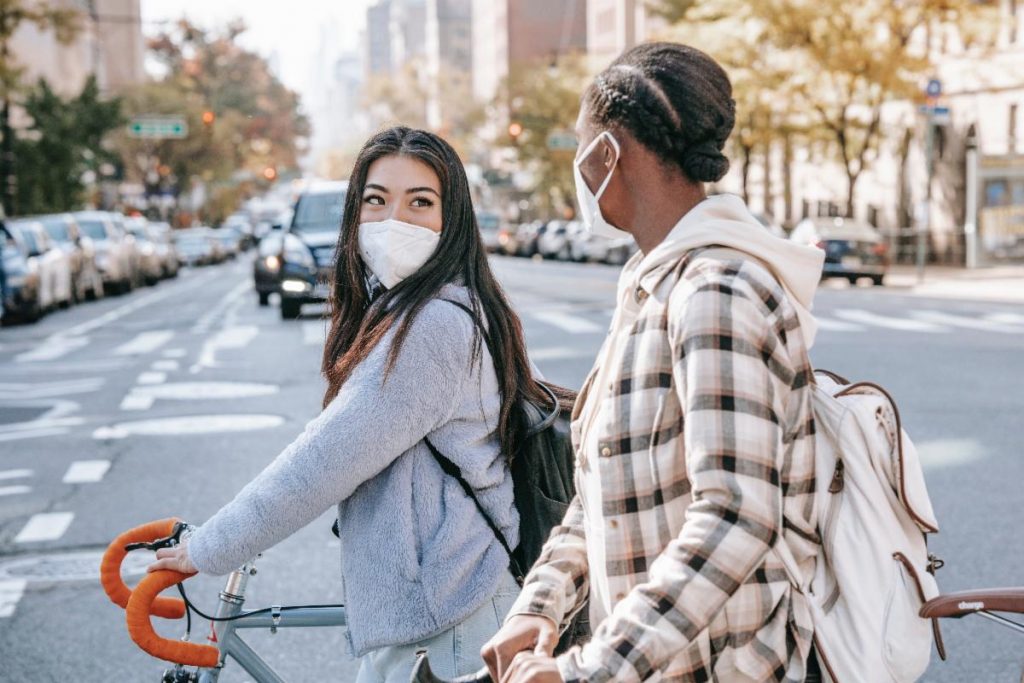| The last year has brought a thousand ups and downs that have made us feel overwhelmed, frustrated, defeated, and stressed about the future. Things have changed, and then changed again, and then again due to the pandemic. Although we’ve spent the year doing a lot of waiting for a return to “normal” (something we’re still waiting for), we have also learned a lot during this time. Let’s take a moment to pause and consider some valuable lessons from the time of Covid. THE VALUE OF SELF-CARE Self-care has been a buzzword for several years now. The idea is to check in with and take care of ourselves. This springs from a two-fold motive: we recognize our worth and we know we have limits. Self-care can look like setting healthy boundaries, seeking therapy for mental health concerns, taking a walk or a nice bath (or both!), and a whole host of other options. The practice of self-care is akin to the instruction flight attendants give during the safety talk before take-off: in the event of a change in cabin pressure, put your own mask on before helping others. This era has taught many of us lessons about the value of self-care. The pandemic increased feelings of uncertainty, loneliness, stress, anxiety, and depression in people all across the country. Self-care provides an important refuge from those stressors, creating space for us to identify what we need to get through the hardest days. HOW TO WORK REMOTELY Many people dreamed of working from home before the pandemic, but it was never an option for most of us. When COVID-19 first struck the country, many companies had to figure out how to function with the new restrictions. For a lot of people, this meant working from home. This was new territory for so many of us. Working from home is different than working in an office in many ways, and we had to figure out how to do our best work in these new circumstances. We needed to modify or develop new organization, discipline, and time-management habits to make this happen. Many of us had lots of trial and error as we worked this out in our homes. What we think of as traditional “office work” may never be the same again. Many companies have shifted their ideas about remote work and best practices over the last year. Some have decided they’re never going back to the office — or at least not requiring their employees to do so. STAYING CONNECTED WHILE DISTANT Social distancing during the coronavirus pandemic has been hard. Staying connected while staying distant seemed too contradictory to work. In the midst of isolation, many people found new ways to stay connected to our friends, families, and communities. Video-chat hangouts, socially distanced book clubs in back yards, watch parties — we figured it out because relationships matter. HOW TO TAKE CARE OF OUR MENTAL HEALTH The mental health of millions of people took a dive at the start of the coronavirus. Faced with many uncertainties, the rates of depression and anxiety increased substantially in the United States. We’ve had to find ways to take care of our mental health despite restrictions. This led to the huge adoption of teletherapy (also known as telehealth, telemental health, and virtual therapy). We’ve discovered new and exciting ways to take care of our mental health — and our providers implemented those alternatives so they could continue providing much-needed support to clients. RESILIENCE The coronavirus pandemic threatened to shake all of us to our core at one point or another. Life changed for everyone. For some, this was incredibly challenging and difficult, but we’ve made it this far. We’ve learned a lesson in resilience during the pandemic. We learned how to power through these difficult times together. This has looked like clapping for healthcare workers as they exited their shift, howling at 8 pm, supporting each other, and our patience holding strong as we wait for our turn to get the vaccine. At the one-year mark, it’s safe to say another thing we’ve learned about resilience is that we have it. “The proof of the pudding is in the eating,” as the saying goes; the proof of our resilience is that we’ve made it through a whole year of these challenges and changes. Put this on your list of “Things I Can Handle If I Have To.” HOW TO BE PATIENT Through the trials and challenges of the coronavirus, we had to learn how to be patient. Patience is the only option in a pandemic with no end in sight. We’ve had to grow in patience with ourselves as we faced a one-in-a-lifetime situation with no rulebook. Lessons in patience with others have increased our tolerance of others navigating those same hardships (often not the way we would). We stretched our patience to accommodate the natural progression of this pandemic as Covid made its way through the world, scientists developed a vaccine, and people started developing herd immunity. EVEN IN TROUBLED TIMES, THERE IS GOOD Despite all the hardships we’ve faced, we’ve reaped some valuable benefits from this pandemic. The lessons we’ve learned here — about taking care of ourselves, adapting to new circumstances, staying connected with those we love, getting the mental health care we need, fortitude, and patience — have the potential to benefit us for the rest of our lives. It’s a good reminder that even the hardest of times are not without hope. © Copyright 2021 GoodTherapy.org. All rights reserved. Permission to publish granted by , therapist in Seattle, Washington |

